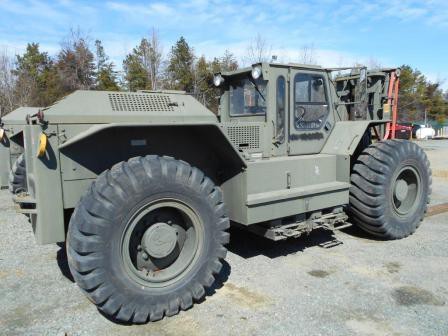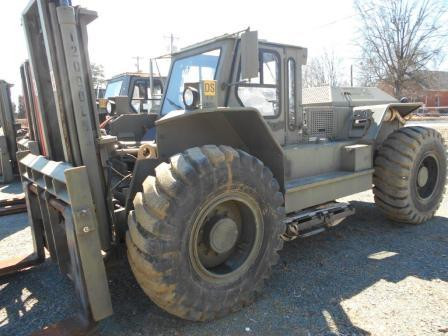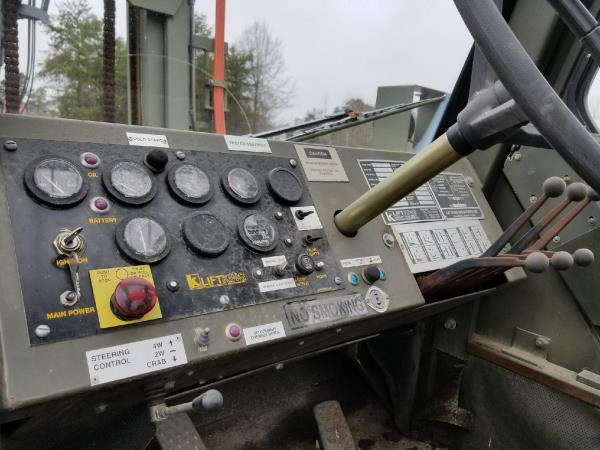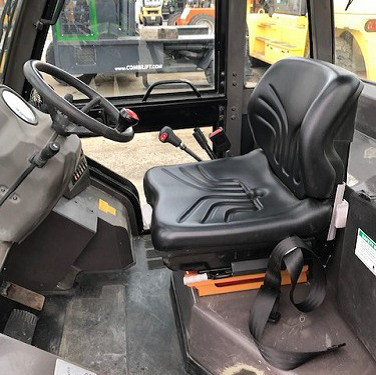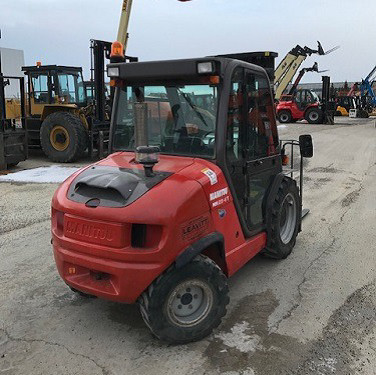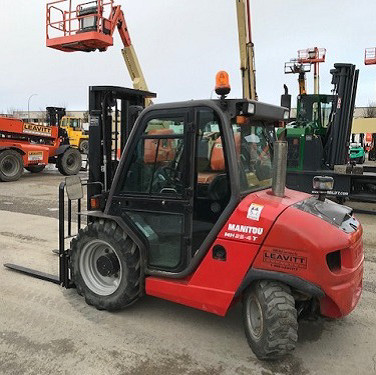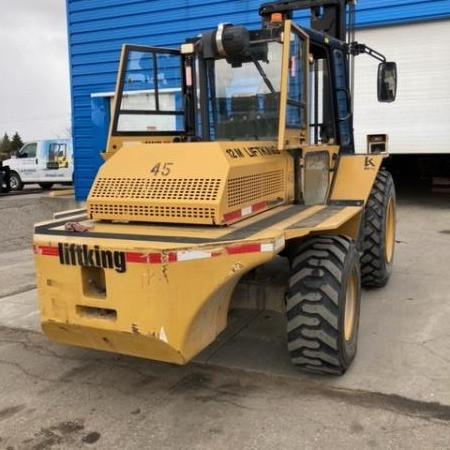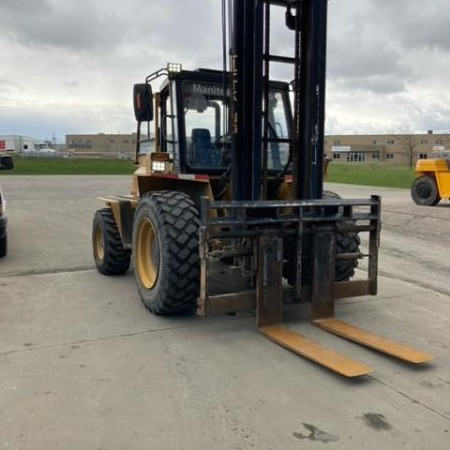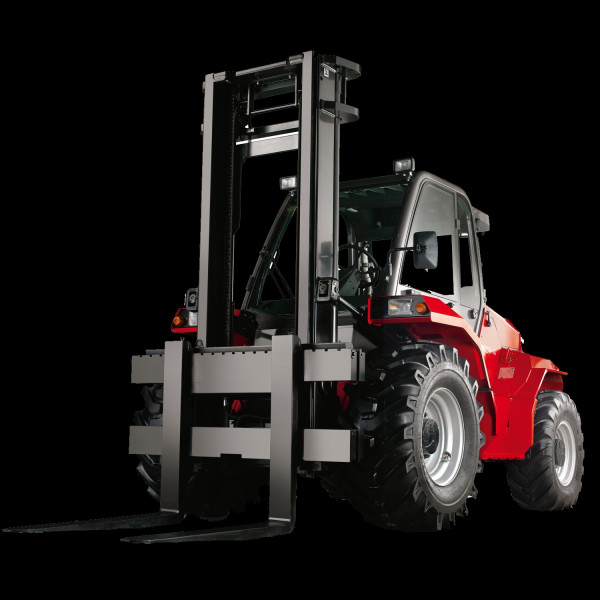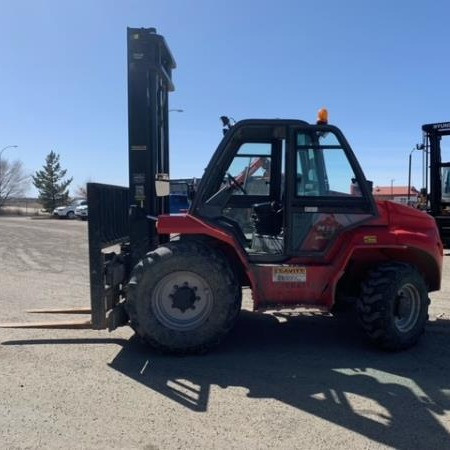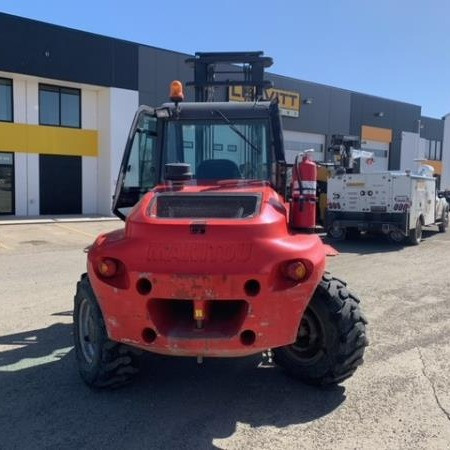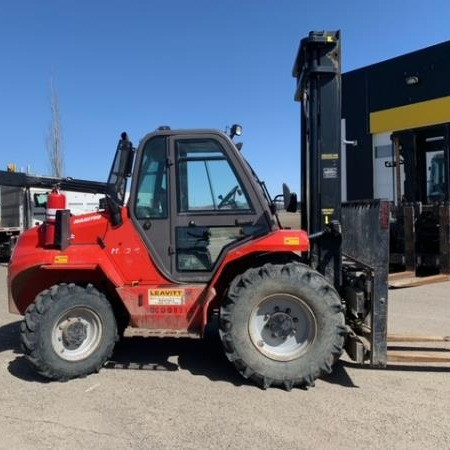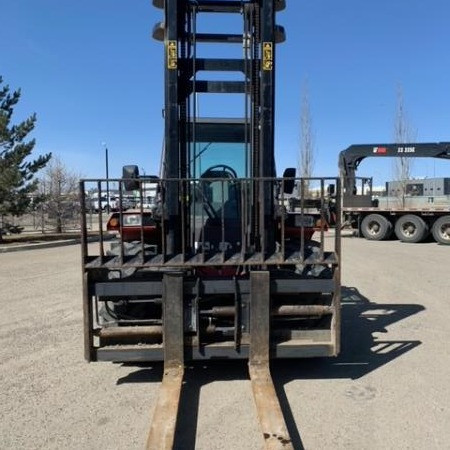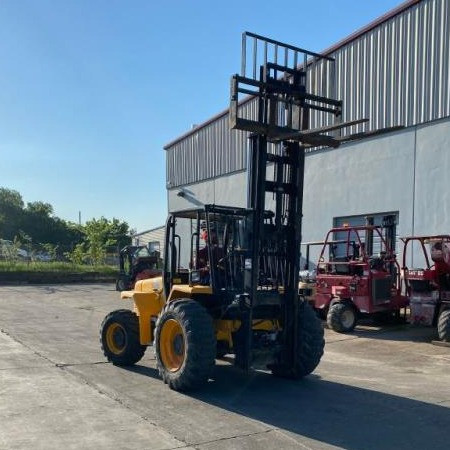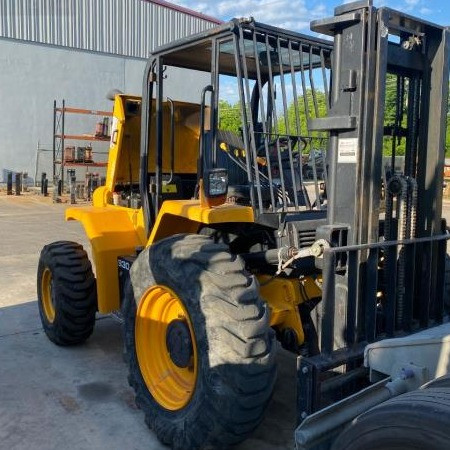Rough Terrain Forklift Arkansas
Used Rough Terrain Forklift Arkansas - Forklift trucks utilize two forks to transport pallets and load and unload cargo. The rough terrain forklift and the industrial forklift are the two main types of forklift trucks.
The first category of forklifts, industrial forklifts, are mostly used in warehouses and at loading docks on surfaces that are relatively smooth and level. Rough terrain forklifts are better suited for rocky environments and uneven surfaces. Rough terrain forklifts are often seen at construction sites and outdoors. They have the weight capacity, size and tires to handle heavy loads. The main difference between rough terrain and industrial forklifts is the cushion tires that are on industrial forklift models. Rough terrain forklifts, on the other hand, are fitted with pneumatic tires, a type of tractor tire allowing for better traction and flotation properties. Industrial forklifts can be powered by internal combustion engines but are more frequently powered by an electrical source, such as battery or fuel cell whereas rough terrain forklifts are almost always powered by an internal combustion engine.
Types of Class 7 Rough Terrain Forklift Trucks
The three types of Class 7 Rough Terrain Forklift Trucks include the rotating telehandler forklifts, telehandler forklifts and straight mast forklifts.
Rough terrain forklifts function well in treacherous locations that are often found in construction sites and military settings. The rough terrain models travel and perform well in difficult locations. Additional consideration needs to be given for rough terrain forklift options while raising loads in difficult conditions in order to stay safe from tipping over. The machine needs to remain in a stable position prior to lowering, lifting or moving any items. Adequate stability and proper lifting techniques need to be implemented to keep the forklift stable on the ground.
Straight Mast Forklifts
Designed to facilitate safe transport along difficult terrain such as demolition sites and construction locations, straight mast forklifts can complete the job safely and efficiently. Pneumatic cushion tires allow this forklift better maneuverability and accessibility around difficult terrain. Uneven ground and rough surfaces are no match for pneumatic tires. It is common for straight mast forklifts to come with 2-wheel or 4-wheel drive. Most straight mast forklifts are powered by diesel or propane fuel, allowing them to be used indoors for short periods but are more suited to outdoor applications. Both standard and straight mast forklifts offer similar lifting capacities weighing from 5000 to 36,000 pounds, depending on the model.
Telehandler or Telescopic Handler Forklifts
Telescopic handler forklifts or telehandlers feature a telescoping boom; hence their name. This specially designed boom allows the forklift truck to pick up loads and place them at differing heights in front of the unit. Better reachability delivers greater flexibility to the forklift operator while placing loads.
Standard telehandler forklift units are long and low. They are designed with two wheels located at the front of the forklift with a different pair of wheels found close to the end of the unit. A telescopic boom is mounted at the rear of the forklift on a pivot that is fixed several feet higher than the forklift frame. The left side of the machine houses the cab and the hydraulic fluid tank and the fuel tank are found opposite to the cab. Along the center of the machine, the engine and transmission can be found inside the frame. Creating a balanced machine is essential for a well-designed forklift. Having this particular configuration generates a stable environment for lifting, lowering and transporting loads.
Telehandler forklifts provide much greater lift heights when compared to a standard forklift. Also called compact telehandlers or high-reach telehandlers, these forklift trucks can lift their full load capacities from 18 feet, for the compact telehandlers, to 56 feet, for the high-reach telehandlers, into the air. The load capacities of these machines range from five thousand pounds to twelve thousand pounds.
All-terrain forklifts often include all-wheel steering which allows for greater maneuverability. Thanks to steering features including power-shift transmission, the operator can maneuver the machine in excellent proximity to the work location.
Recent telehandler units showcase top-of-the-line ergonomic design to generate increased comfort and operator satisfaction. These features include tilted steering options and roomier cabs to increase operator comfort. Increasingly, these types of ergonomic features are in demand at worksites as they have been shown to improve productivity by decreasing operator repetitive stress injuries and operator fatigue.
A single joystick is a common design for most telehandlers. The joystick is essential for controlling the boom functions and the hydraulics responsible for forward operation.
Non-marking tires are a feature that telehandler forklifts can benefit from by allowing these units to be utilized for maintenance on billboards and signs and on stadiums and buildings.
Rotating Telehandler or Roto Telescopic Handler Forklifts
Roto telescopic handler forklifts or rotating telehandlers have numerous items in common with the standard telehandler model. Telehandlers are capable of rotating heavy-lift weights to tremendous heights. The turntable or rotating ability add extra panache. Rotating the forklift a complete three-hundred-and-sixty degrees creates a larger working location without the need of repositioning the forklift.
With rotating telehandlers, one joystick handles the lift capacity and a second joystick is responsible for the rotation factor. As with the standard telehandler forklift, rotating telehandlers are available with added features including power assist steering, four-wheel drive and minimized slip differential on the rear axle to boost traction and for additional safety.
With the added rotating ability of these forklifts, comes additional safety considerations. Rotating telehandler rough terrain models come with standard stabilizers to establish more safety while rotating loads back and forth. Certain rotating telehandlers operate without stabilizers; minimizing the time it takes to reposition the machine and move to other workplace locations.
Rotator telehandlers are usually smaller than their fixed cab counterparts, the standard telehandler. Understandably, rotator telehandler machines can handler smaller load capacities compared to their standard telehandler counterparts. Rotating telehandlers offer load capacities ranging from 4000 to 10,000 lbs. and lift heights between fifteen to eighty feet.
Winch attachments can transform rotator telehandlers and standard models into a crane. This means that these forklifts can sometimes allow a project to forego the need for a crane at the jobsite, saving time, expense and workspace.
Advancements for Rough Terrain Forklifts
Many attachments are currently available for rough terrain forklifts, such as booms, winches, rotating fork carriages and articulating booms. More rough terrain forklift attachments will be unleashed onto the market in future years thanks to their ability to make the forklift more multi-purpose than ever before.
The majority of advancements will be delivered as safety features built to enhance the rough terrain models. The latest safety upgrades include automatic load restriction and other features. This system weighs a load automatically and then calculates the safe reach distance of the load while considering the extension and boom angle. If the safe reach distance is reached, an alarm will sound, warning the operator to make the proper adjustments to either the boom angle, the reach distance or load weight.
Rough Terrain Forklift PDF
Stock Number: 267846 GL
Make: Liftking
Model: LK12000
Year: 2003
| Stock Number |
267846 GL |
| Make |
Liftking |
| Model |
LK12000 |
| Year |
2003 |
| Category |
Rough Terrain Forklift |
Stock Number: DP-MAN008 GL
Make: MANITOU
Model: MH25-4T
Year: 2016
| Stock Number |
DP-MAN008 GL |
| Make |
MANITOU |
| Model |
MH25-4T |
| Year |
2016 |
| Category |
Rough Terrain Forklift |
Stock Number: 209058 GL
Make: LIFTKING
Model: LK12M42
Year: 2015
| Stock Number |
209058 GL |
| Make |
LIFTKING |
| Model |
LK12M42 |
| Year |
2015 |
| Category |
Rough Terrain Forklift |
Stock Number: EQC008213 GL
Make: MANITOU
Model: M50
Year: 2017
| Stock Number |
EQC008213 GL |
| Make |
MANITOU |
| Model |
M50 |
| Year |
2017 |
| Category |
Rough Terrain Forklift |
Stock Number: LS15257 GL
Make: JCB
Model: 930
Year: 2013
| Stock Number |
LS15257 GL |
| Make |
JCB |
| Model |
930 |
| Year |
2013 |
| Category |
Rough Terrain Forklift |
Stock Number: 208325 GL
Make: MANITOU
Model: M50.4
Year: 2015
| Stock Number |
208325 GL |
| Make |
MANITOU |
| Model |
M50.4 |
| Year |
2015 |
| Category |
Rough Terrain Forklift |




